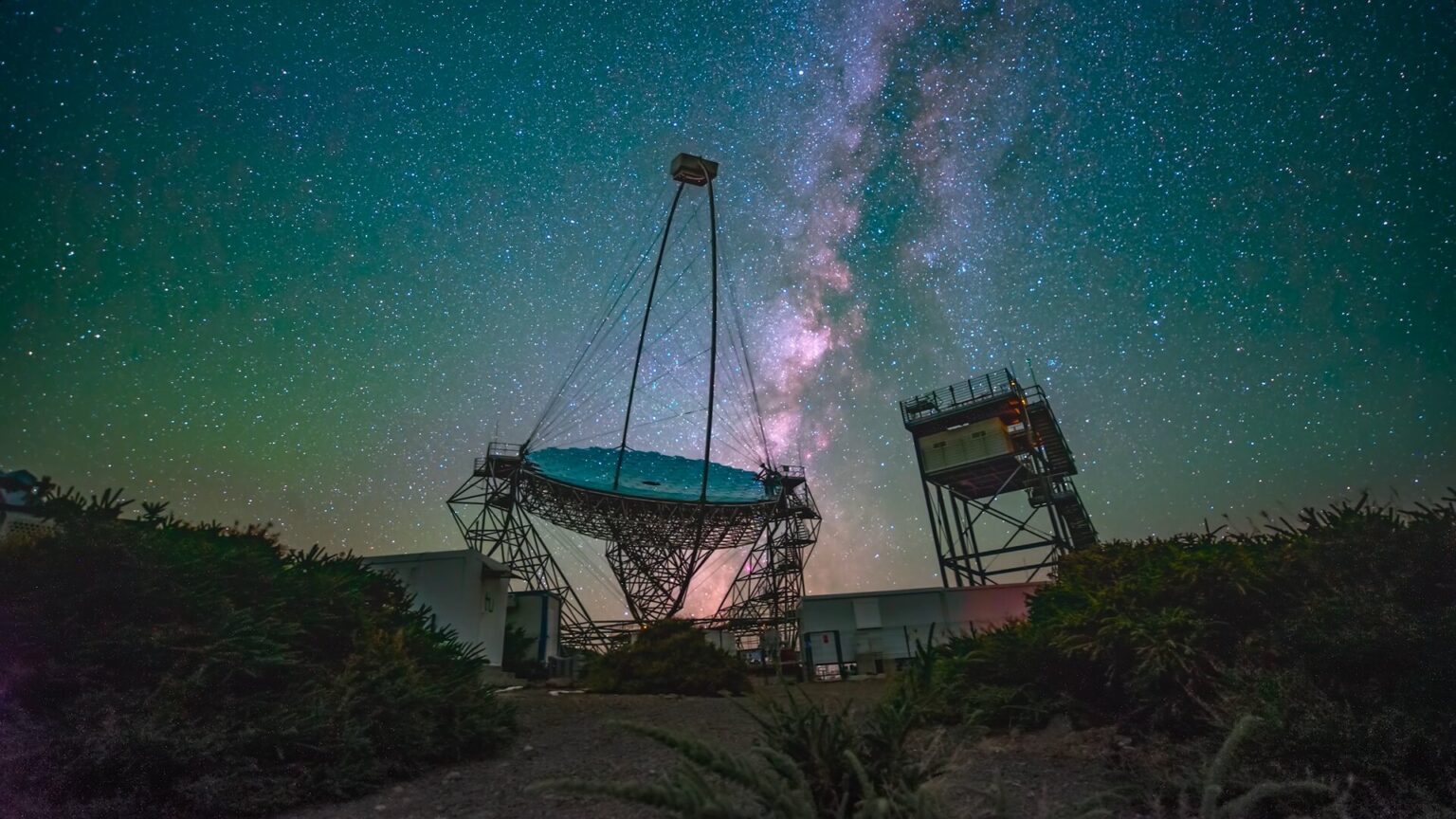The LST-1 telescope helped scientists discover a new radio quasar. It has incredibly high radiation energies and can help scientists deal with extragalactic background light.

Radio Quasar OP 313
On December 15, scientists reported on the astronomical telegram channel ATel about the discovery of the OP 313 source at very high energies using the LST-1 telescope. Although OP 313 has been known at lower energies, it has never been detected above 100 GeV.
Thanks to these results, OP 313 became the most distant active galactic nucleus (AGN) ever discovered by the LST-1 telescope. OP 313 is a so-called radio quasar with a flat spectrum. These are very bright objects found in the centers of some galaxies, where a supermassive black hole absorbs material from the environment, creating a powerful accretion disk, jets of light and relativistic particles.
With data from just 4 days of observations, the LST collaboration could detect radio quasars with an energy of more than 100 GeV, which is a billion times higher than the level of visible light that a human can perceive.
Difficulties in observation
Only nine very high-energy quasars are known, and OP 313 is now the tenth. In general, this type of stellar object is more difficult to detect than other types of AGN. This is not only because the brightness of their accretion disk weakens gamma rays, but also because they are farther away. In this case, OP 313 is located at a redshift of 0.997 or ~8 billion light years away, making it the most distant object of this type.
The more distant the source, the more it can be detected when detecting hypersensitivity due to the so-called Extragalactic Background Light, or EBL. EBL is the total radiation from all objects outside the Milky Way, which propagates in various wavelength ranges — visible, infrared and ultraviolet. EBL interacts with very high-energy gamma rays, weakening their flow and thus making them difficult to observe.
The LST collaboration will continue to monitor this source using LST-1 to expand the data set and thus obtain a more accurate analysis that will allow scientists to better understand what background light is.
According to phys.org
Follow us on Twitter to get the most interesting space news in time
https://twitter.com/ust_magazine


